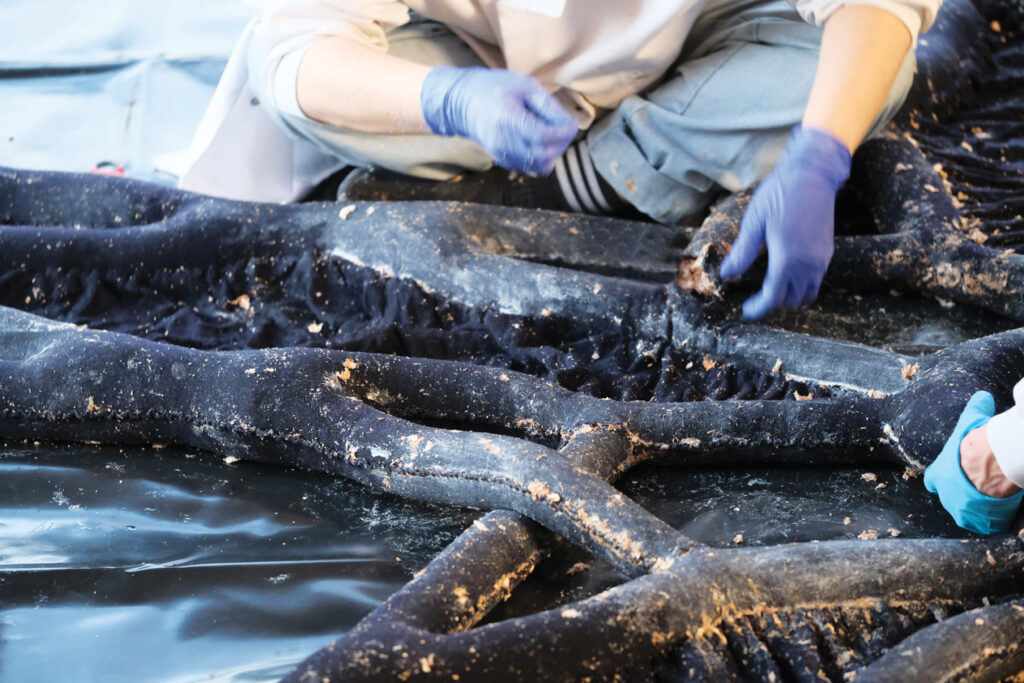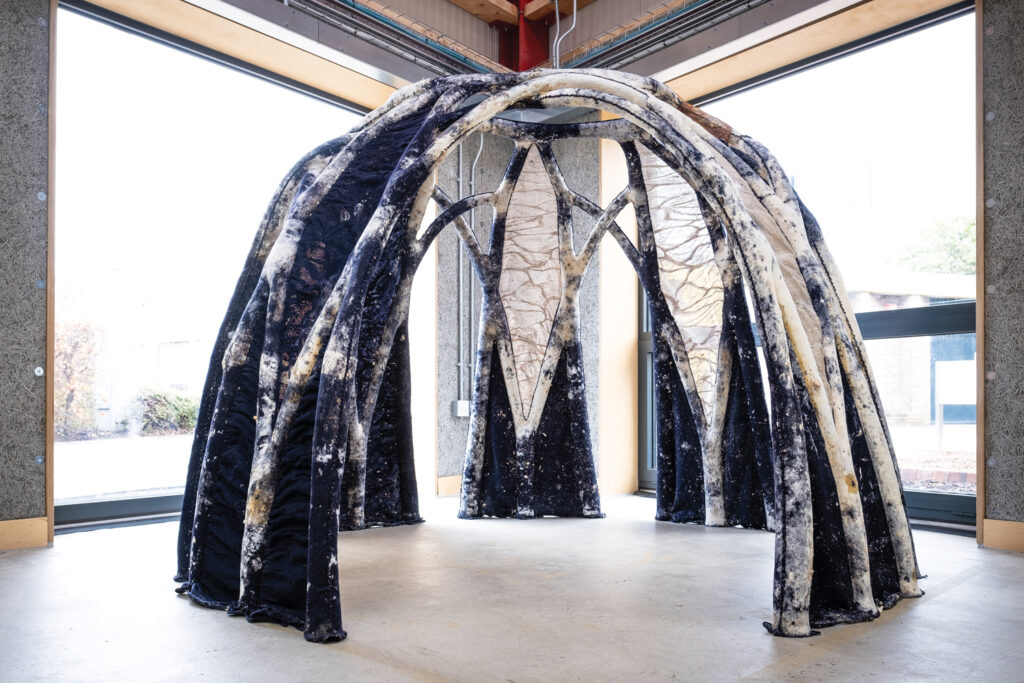
A team of scientists and engineers in the Living Textiles Research Group in the Hub for Biotechnology in the Built Environmentat Newcastle University in Tyne, England, may have produced a cheaper, more eco-friendly alternative to conventional materials, such as foam, timber and plastic, using mycelium.
Their method involves a knitted textile framework and the usage of a paste called “mycocrete,” made of mycelium, paper fiber and powder, water, glycerin and xanthan gum.
Construction applications for mycelium composites have been studied before because of their excellent thermal and acoustic properties. However, utilizing mycelium for larger-scale applications has been challenging because the organism’s need for oxygen puts size and shape constraints on growing it in rigid molds. A knitted textile framework offers a solution.
“Knitting is an incredibly versatile 3D manufacturing system,” says Jane Scott, an academic track fellow in the Hub for Biotechnology in the Built Environment. “It is lightweight, flexible and formable. The major advantage of knitting technology compared to other textile processes is the ability to knit 3D structures and forms with no seams and no waste.”

To create mycocrete, scientists made a mixture of mycelium spores and other components. They then inserted the mixture into a knitted formwork braced with a removable plastic mold and stored it in a warm and dark environment to allow the substrate to bind together. After the paste reached the right density, the samples were dried out. Then each sample endured strength tests in tension, compression and flexion.
The team found that the porous knitted fabric of the framework increased oxygen levels, resulting in the samples shrinking less than most mycelium composites do when dried. They also found that mycocrete was a vast improvement in tensive, compressive and flexural strength and stiffness compared to conventional mycelium composites.
“Our ambition is to transform the look, feel and well-being of architectural spaces using mycelium in combination with bio-based materials such as wool, sawdust and cellulose,” says Scott.
To test the usage of mycocrete at scale, they created the prototype BioKnit, a self-supporting arched dome. They created the dome by fixing tubes made from merino yarn to a rigid structure and then filled the tubes with mycocrete using an injection gun. Based on their findings, this method could be further developed and scaled for construction applications.
This study was published in the journal Frontiers in Bioengineering and Biotechnology in July 2023.
 TEXTILES.ORG
TEXTILES.ORG


